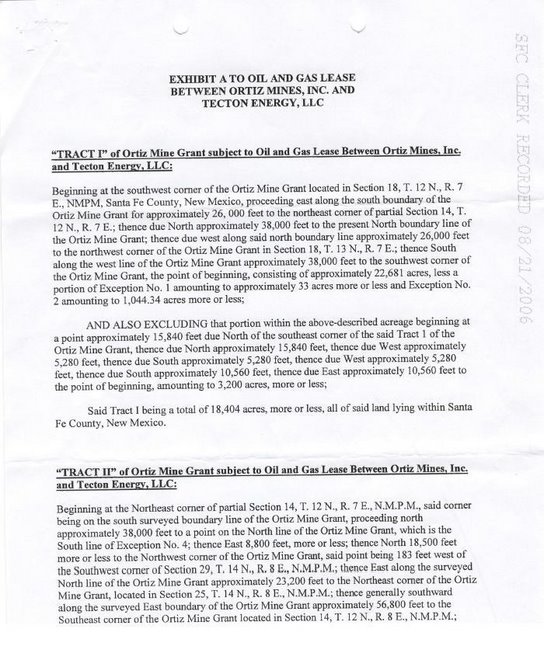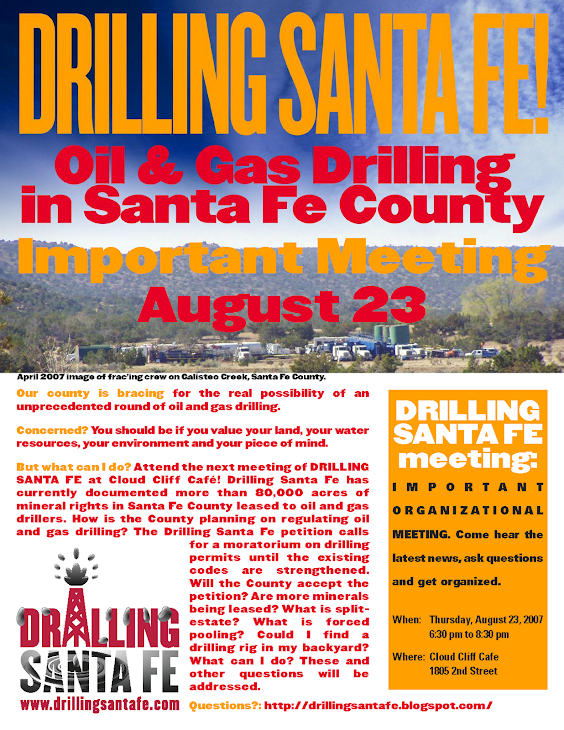The New York Time
By IAN URBINA
Published: February 26, 2011
The Waste Problem
Articles in this series will examine the risks of natural-gas drilling and efforts to regulate this rapidly growing industry.
Multimedia
Related
 Spreadsheet: Contaminants in Samples From More Than 200 Wells (Microsoft Excel File)
Spreadsheet: Contaminants in Samples From More Than 200 Wells (Microsoft Excel File)
Readers' Comments
Share your thoughts or ask the reporter a question.
The gas has always been there, of course, trapped deep underground in countless tiny bubbles, like frozen spills of seltzer water between thin layers of shale rock. But drilling companies have only in recent years developed techniques to unlock the enormous reserves, thought to be enough to supply the country with gas for heating buildings, generating electricity and powering vehicles for up to a hundred years.
So energy companies are clamoring to drill. And they are getting rare support from their usual sparring partners. Environmentalists say using natural gas will help slow climate change because it burns more cleanly than coal and oil. Lawmakers hail the gas as a source of jobs. They also see it as a way to wean the United States from its dependency on other countries for oil.
But the relatively new drilling method — known as high-volume horizontal hydraulic fracturing, or hydrofracking — carries significant environmental risks. It involves injecting huge amounts of water, mixed with sand and chemicals, at high pressures to break up rock formations and release the gas.
With hydrofracking, a well can produce over a million gallons of wastewater that is often laced with highly corrosive salts, carcinogens like benzene and radioactive elements like radium, all of which can occur naturally thousands of feet underground. Other carcinogenic materials can be added to the wastewater by the chemicals used in the hydrofracking itself.
While the existence of the toxic wastes has been reported, thousands of internal documents obtained by The New York Times from the Environmental Protection Agency, state regulators and drillers show that the dangers to the environment and health are greater than previously understood.
The documents reveal that the wastewater, which is sometimes hauled to sewage plants not designed to treat it and then discharged into rivers that supply drinking water, contains radioactivity at levels higher than previously known, and far higher than the level that federal regulators say is safe for these treatment plants to handle.
Other documents and interviews show that many E.P.A. scientists are alarmed, warning that the drilling waste is a threat to drinking water in Pennsylvania. Their concern is based partly on a 2009 study, never made public, written by an E.P.A. consultant who concluded that some sewage treatment plants were incapable of removing certain drilling waste contaminants and were probably violating the law.
The Times also found never-reported studies by the E.P.A. and a confidential study by the drilling industry that all concluded that radioactivity in drilling waste cannot be fully diluted in rivers and other waterways.
But the E.P.A. has not intervened. In fact, federal and state regulators are allowing most sewage treatment plants that accept drilling waste not to test for radioactivity. And most drinking-water intake plants downstream from those sewage treatment plants in Pennsylvania, with the blessing of regulators, have not tested for radioactivity since before 2006, even though the drilling boom began in 2008.
In other words, there is no way of guaranteeing that the drinking water taken in by all these plants is safe.
That has experts worried.
“We’re burning the furniture to heat the house,” said John H. Quigley, who left last month as secretary of Pennsylvania’s Department of Conservation and Natural Resources. “In shifting away from coal and toward natural gas, we’re trying for cleaner air, but we’re producing massive amounts of toxic wastewater with salts and naturally occurring radioactive materials, and it’s not clear we have a plan for properly handling this waste.”
The risks are particularly severe in Pennsylvania, which has seen a sharp increase in drilling, with roughly 71,000 active gas wells, up from about 36,000 in 2000. The level of radioactivity in the wastewater has sometimes been hundreds or even thousands of times the maximum allowed by the federal standard for drinking water. While people clearly do not drink drilling wastewater, the reason to use the drinking-water standard for comparison is that there is no comprehensive federal standard for what constitutes safe levels of radioactivity in drilling wastewater.
Drillers trucked at least half of this waste to public sewage treatment plants in Pennsylvania in 2008 and 2009, according to state officials. Some of it has been sent to other states, including New York and West Virginia.
Yet sewage treatment plant operators say they are far less capable of removing radioactive contaminants than most other toxic substances. Indeed, most of these facilities cannot remove enough of the radioactive material to meet federal drinking-water standards before discharging the wastewater into rivers, sometimes just miles upstream from drinking-water intake plants.



























No comments:
Post a Comment